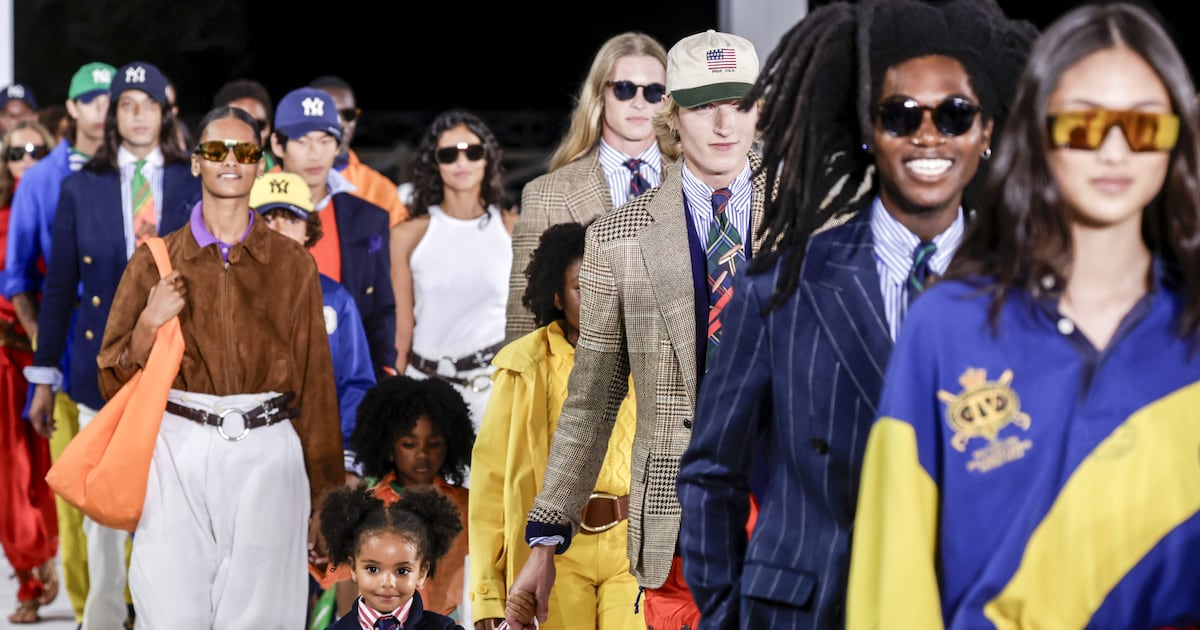The death of New York Fashion Week has long been lamented, but the events of last week appear to be proof of life.
Sure, there are still problems. Homegrown talents like Peter Do, The Row and, most recently, Gabriela Hearst have decamped to Paris. Former mainstays like Oscar de la Renta and Marc Jacobs now show off-calendar. Shows in hard-to-access locations on the far west side of Manhattan and in the Brooklyn Navy Yard have made programming into something of a week-long schlep.
These challenges were crystalised in a joint report by McKinsey and the nonprofit Partnership for New York City, published on the first day of fashion week this season. It points to a âdeflation of NYFW on the world stageâ due to the decentralisation of venues, the prohibitive costs of putting on a runway show and an overall lack of engagement with the city itself.
Over the past week, however, New York Fashion Week has proven its critics wrong. The big moments this season felt more grand than before â just look at Ralph Laurenâs equestrian showcase in Bridgehampton, which included a one-night-only recreation of his famed Polo Bar restaurant, or the surprise performance by Wu-Tang Clan, brought together by Tommy Hilfiger on a decommissioned Staten Island ferry.
Marquee shows from Alaïa and Off-White, both of which typically show in Paris, as well as the arrival of Swedish minimalist favourite Toteme, signalled the strength and desirability of the American market. Domestic talent, in the form of a small but influential cohort of indie brands, exhibited their aesthetic worlds in their own idiosyncratic ways, whether thatâs through Eckhaus Lattaâs rambunctious dinner party or Willy Chavarriaâs runway ode to democracy. New York mainstays put their commercial success on display â Coach sent a wide range of bags down the runway, from oversized backpacks to top-handle satchels covered in doodles, and Tory Burch brought back its Reva flat, a style that catapulted the brand to success in the late aughts.
Beyond the runway, the energy percolated across the city in the form of events and activations, engaging other segments of the fashion industry. Florentine retailer LuisaViaRoma opened its first international outpost with a splashy party on Sept. 4. The next day, J.Crew recreated the iconic New York restaurant La Côte Basque in the basement of the New York Public Library. Thom Browne, Kering and Loewe with Saks also hosted dinners throughout the week, each just as star-studded as the last. Rival influencer monetisation companies ShopMy and LTK both hosted events, the latter for the first time since before the pandemic.
If anything, this New York Fashion Week flaunted its hometown and brought back an excitement that hadnât been felt in years. The perfect early autumn weather didnât hurt either.
âPeople were just really excited and having fun last week,â said fashion writer Rachel Tashjian. âIt felt convivial, rather than like a grind.â
Behind-the-scenes, there were critical logistical improvements. In response to growing complaints about the difficulty of getting between shows, the Council of Fashion Designers of America teamed up with Google this season to charter a bus that took attendees from show to show. It was overall a big hit, even with the traffic. And more so than in past seasons, shows tended to run on time (or at least, within 30 minutes of their supposed start time), with few exceptions.
To be sure, it wasnât a perfect week. The sheer star-power â Alaïa was one of the few shows to start late because it was holding the runway for Rihanna to arrive â or production value of the events often overshadowed the clothes themselves.

And in this iteration of NYFW, it seemed that a big name or a big budget was the surest ticket to success, which posed challenges for small brands trying to break through the noise.
âNew York Fashion Week has been known as a place to discover new brands, and some of that discovery aspect is now gone,â said Gary Wassner, founder of financing firm Hilldun Corp.
And though many attendees were grateful not to have to make the trek to the Starrett-Lehigh building, or brave Spring Studioâs elevator lines, some emerging designers missed those hubs, which were operated by IMG. Knitwear designer Nia Thomas said showing as part of Black in Fashion Councilâs showroom last season at Starrett-Lehigh changed the trajectory of her business.

âEditors who didnât know us came and discovered. They started pulling samples immediately, my DMs were blowing up in the weeks after from stylists,â said Thomas. âThat type of exposure is massive and you canât put a price on it.â This season, Thomas was not invited back by the Black in Fashion Council. After having trouble securing a workable location and sponsors, she opted to bow out presenting entirely.
As it gets more expensive and logistically difficult to stage shows, brands must think harder about whether they really need one. A runway show isnât always the best format every season for small brands and sometimes even larger ones. A number of brands favoured small gatherings rather than traditional shows this season, for instance. Todd Snyder invited about 50 people to his runway inside Le Rock restaurant; Eckhaus Latta coordinated with its guests to walk the ârunwayâ at a dinner event in a loft in Tribeca.
The intimacy of these events also underscored the closeness of the fashion community in New York City â another reason why this season felt reinvigorated, insiders said.
Eckhaus Lattaâs dinner was a great example of a brand demonstrating its cultural prowess, said Tashjian. âTheyâre saying, âWeâve really built something thatâs not just an aesthetic but a sensibility and a group of very dedicated customers,ââ she added.

